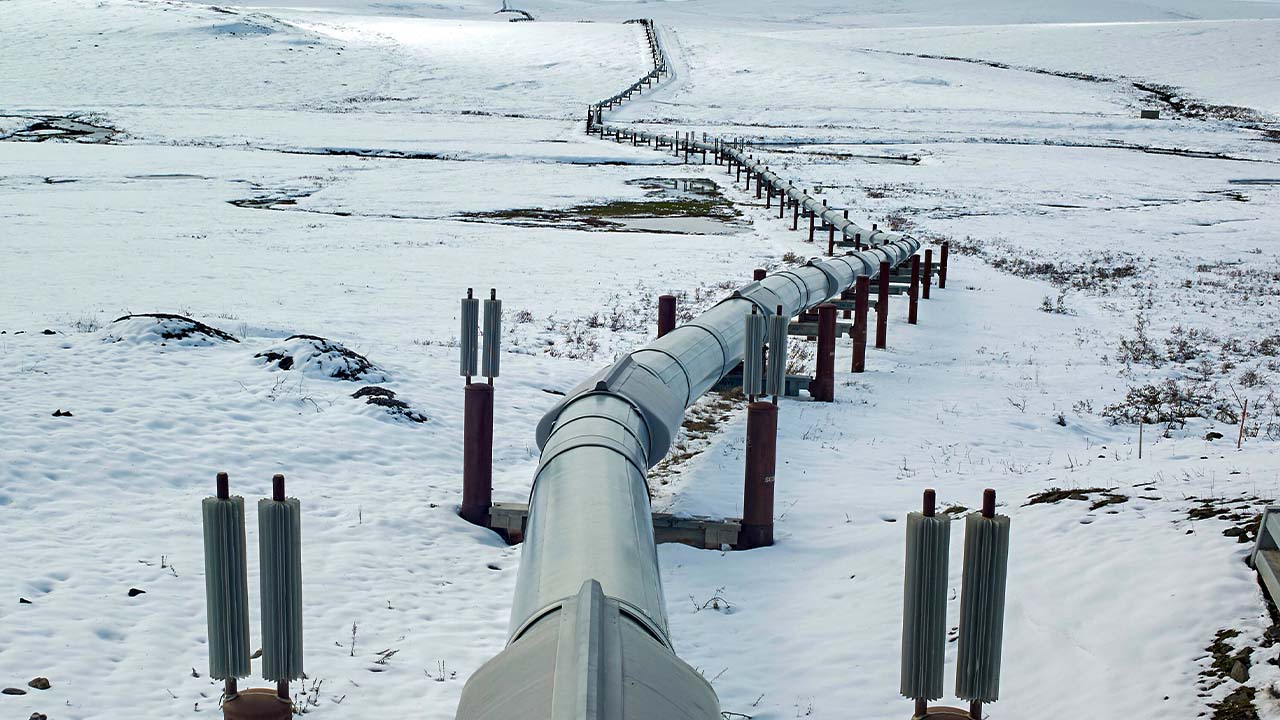Willow Project: The Most Controversial Project in the History of the US
Green energy represents a pivotal shift in how nations produce and consume power, aiming to replace fossil fuels with renewable resources like wind, solar, and hydropower. The importance of green energy cannot be overstated as it plays a crucial role in combating climate change, reducing greenhouse gas emissions, and promoting sustainable development. As the effects of global warming become more evident, nations worldwide are investing heavily in green technologies, striving to achieve a balance between economic growth and environmental protection.
Countries like Albania, Iceland, and Paraguay are leading examples in this realm, with almost all of their electricity derived from renewable sources. Albania and Paraguay generate 100% of their electricity from hydroelectric power, while Iceland produces 72% of its electricity from hydroelectric power and 28% from geothermal energy. Norway is another notable example, sourcing 97% of its electricity from hydropower.
On the other hand, China is making significant strides in green energy production, with projects like the Kela Photovoltaic Power Station, situated at a staggering altitude of approximately 4,600 meters. This facility is projected to produce an impressive 2 billion kilowatt-hours (kWh) annually. Despite these advancements, the journey towards green energy is not without its challenges and controversies.
Also Read: China’s Kela Photovoltaic Power Station: The World’s Largest Hydro-Solar Facility
In March 2023, the Willow Project in Alaska received approval from the Biden administration. This decision has sparked intense debate as the project proposes a massive oil drilling operation, anticipated to generate 277 million metric tons of carbon emissions. This direction stands in stark contrast to the global movement towards cleaner energy.
What is the Willow Project in Alaska, and why is it so controversial? Let’s find out!
The Willow Project stands as a monumental well-drilling venture situated in the vast expanse of the National Petroleum Reserve of Alaska on the North Slope, a region under the jurisdiction of the federal government. Spearheaded by ConocoPhillips, an esteemed American multinational energy corporation with a rich history of oil exploration and drilling in Alaska, this project promises to be a significant undertaking in the realm of oil production.
The Willow Project encompasses the establishment of a new oil field, projected to house up to five drill sites, numerous processing facilities, and an extensive network of pipelines and roads spanning hundreds of miles. The area earmarked for this ambitious development is roughly 20 miles west of New Except village, incorporating both Federal and Native owned lands. With an estimated reserve of up to 600 million barrels of oil, Willow stands as the largest proposed oil project on U.S public land to date. However, it is crucial to note that tapping into these reserves and bringing the oil to market is a lengthy process, with the project still in the construction phase.
Upon completion, the Willow Project is poised to significantly bolster oil production, with an expected output of up to 180,000 barrels of oil per day, representing approximately 1.5 % of the total U.S. oil production. The construction phase alone is projected to create thousands of job opportunities. ConocoPhillips estimates that the project will generate 2,500 construction jobs and 300 permanent positions, contributing substantially to the local economy. The Bureau of Land Management has estimated that the project could generate revenue ranging from 8 to 17 billion dollars, showcasing its potential economic impact.
Despite its economic promises, the Willow Project has not been without controversy. Environmental organizations and Indigenous communities have voiced their concerns regarding the project’s potential adverse effects on wildlife, air and water quality, and local subsistence activities. Critics have also pointed out the project’s role in exacerbating climate change through increased production of fossil fuels. The project has undergone rigorous review by federal agencies, including the Bureau of Land Management and the U.S Army Corps of Engineers, ensuring a comprehensive environmental assessment.
Discovered in 2016, the Willow prospect area west of Alpine, Alaska, received approval from the Bureau of Land Management in October 2020. Following a court challenge in 2021, a final supplemental environmental impact statement was issued in February 2023. While the project has garnered support from Alaskan lawmakers across the political spectrum and the Arctic Slope Regional Corporation, it has faced legal challenges. On March 13, 2023, the Biden administration granted its approval, only for Earthjustice to file a lawsuit on behalf of conservation groups the following day. The lawsuit challenges the project’s alignment with President Joe Biden’s climate goals, highlighting the potential production of 750 million barrels of oil and 287 million tons of carbon emissions over 30 years, and the detrimental impact on Arctic wildlife and Native American communities.
Also Read: Woodsmith Mine will Help the UK Economy for the Next 50 Years
In the wake of the recent approval of the Willow Project, the world has been left to ponder the significant environmental and climate repercussions that are poised to unfold. Just a week after the project received the green light, the United Nations Intergovernmental Panel on Climate Change (IPCC) delivered a stark report. The global community is straying from its commitment to limit the rise in average temperatures to 1.5 degrees Celsius, a critical threshold beyond which devastating effects are anticipated. From catastrophic sea-level rise to extreme heat waves, the potential for millions of deaths worldwide by the century’s end looms large.
The IPCC’s report underscores the urgency of ceasing fossil fuel combustion, a major driver of carbon emissions and global temperature increases. In this context, the Biden administration’s admission that the Willow project would contribute an additional 9.2 million metric tons of carbon pollution annually is alarming. This amount is tantamount to the emissions from two million gasoline-powered vehicles. Christy Goldfuss, the chief policy impact officer at NRDC, aptly describes the situation as “green-lighting a carbon bomb.”
Beyond the climate impacts, the Willow project threatens to wreak havoc on the near-pristine ecosystem of the National Petroleum Reserve-Alaska (NPR-A). The project necessitates the construction of extensive infrastructure, including roads and pipelines, posing severe ecological threats. Conservationists estimate potential losses to include 532 acres of wetlands, significant habitat disturbances for polar bears, and over 17,000 acres of disturbances for avian species.
The Bureau of Land Management, tasked with the project’s approval, has portrayed a scenario of limited agency, suggesting that existing leases to ConocoPhillips left them with little choice but to proceed. Despite considering various project scenarios, each would enable ConocoPhillips to extract over 90% of the desired oil. However, NRDC, alongside other environmental groups, is challenging this narrative, arguing that the agency possesses the authority to further limit the project’s scope. The lawsuit also highlights an alleged failure in adequately assessing the climate impacts of potential future projects facilitated by Willow’s infrastructure.
The agency predicts that Willow could yield over 600 million barrels of oil in the next 30 years. Meanwhile, ConocoPhillips, with earnings of $18.7 billion last year, speculates up to 3 billion barrels of oil equivalent in nearby areas. The Center for American Progress warns that burning such quantities of oil would equate to the annual carbon emissions of all transportation modes in the United States combined, jeopardizing national carbon emission targets.
Despite these challenges, the Biden administration has demonstrated commendable leadership in climate action, exemplified by the Inflation Reduction Act, which marked a historic investment in clean energy and greenhouse gas reduction. This progress underscores the administration’s commitment to halving climate pollution by 2030. However, the approval of the Willow project stands as a significant setback, threatening to undermine American climate leadership and impede progress toward crucial global emissions reduction goals. The decision to proceed with Willow is a grave error, one that the United States and the global community can ill-afford in these critical times.
Now that the Biden Administration has officially given the green light to the Willow Project, the pathway to construction has been opened. However, there remains a shroud of uncertainty regarding the commencement of the project, largely attributed to the looming legal battles that lie ahead.
Environmental advocacy groups are gearing up for a legal showdown, while ConocoPhillips is racing against time to kickstart the construction. The unique conditions of the project dictate that construction activities can only take place during the winter months, as the establishment of ice roads is crucial for the building of the oil project’s extensive infrastructure. This includes the development of hundreds of miles of roads and pipelines, as well as a processing facility.
The window of opportunity for construction is dictated by Alaska’s winter season, which could potentially conclude in April, depending on weather conditions. If the environmental groups manage to secure an injunction before this period ends, it could result in a delay of the project by at least a year. Given that the project necessitates complete construction before any oil production can commence, this could translate to a substantial delay in the time it takes for the oil extracted from Willow to reach the market.
This mega project now stands at a critical juncture, sparking a wave of debates and discussions. What are your perspectives on this monumental project? Should it proceed unchallenged, or does it warrant contention and scrutiny? Share your thoughts in the comments below. Thank you for tuning in, and we look forward to seeing you in our next video.







